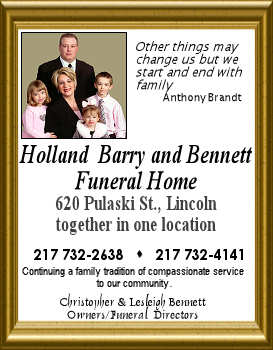|
And Tyrone Willingham, the man he mentored during Willingham's Stanford coaching days and one of the first participants in Walsh's minority fellowship program.
Nicknamed "The Genius" for his creative schemes that became known as the West Coast offense, Walsh died at his Woodside home Monday morning following a long battle with leukemia. He was 75.
"He gave me the opportunity to come to a winner, San Francisco out of Mississippi Valley State University," Rice said. "I was the 16th player taken in the first round. It was all because of Bill Walsh and what he stood for. I think that was very unique for him, because he could see talent."
Walsh changed the NFL with his innovative offense and a legion of coaching disciples, breaking new ground and winning three Super Bowls with the San Francisco 49ers along the way.
"This is just a tremendous loss for all of us, especially to the Bay Area because of what he meant to the 49ers," said Joe Montana, San Francisco's Hall of Fame quarterback. "Outside of my dad he was probably the most influential person in my life. I am going to miss him."

Walsh didn't become an NFL head coach until 47, and he spent just 10 seasons on the San Francisco sideline. But he left an indelible mark on the nation's most popular sport, building the once-woebegone 49ers into the most successful team of the 1980s.
The soft-spoken Californian also produced an army of proteges. Many of his former assistants went on to lead their own teams, handing down Walsh's methods to dozens more coaches in a tree with innumerable branches.
"The essence of Bill Walsh was that he was an extraordinary teacher," NFL commissioner Roger Goodell said. "If you gave him a blackboard and a piece of chalk, he would become a whirlwind of wisdom."
Walsh went 102-63-1 with the 49ers, winning 10 of his 14 postseason games along with six division titles. He was the NFL's coach of the year in 1981 and 1984.
Few men did more to shape the look of football into the 21st century. His cerebral nature and often-brilliant stratagems earned him his nickname well before his election to the Pro Football Hall of Fame in 1993.
He visited with friends until the end, and attended basketball games at Stanford all winter. Willingham, now at Washington, and Stanford donor and alumnus John Arrillaga went to see Walsh on Sunday, presenting him with the Stagg Award for his outstanding service to football.

Walsh created the Minority Coaching Fellowship program in 1987, helping minority coaches get a foothold in a previously white-dominated profession. Willingham and Marvin Lewis were among those who went through the program, later adopted as a league-wide initiative.
"The world lost a great man in Bill Walsh. He had a tremendous impact on me, both personally and professionally," said Willingham, who replaced Walsh as Stanford's head coach in 1994. "Bill's development of the minority coaching program at the collegiate and professional levels literally changed the face of football."
Raiders owner Al Davis and Hall of Famer John Madden stopped by to see Walsh on Saturday, and Montana on Friday and also last Wednesday along with Ronnie Lott. Hall of Fame quarterback Steve Young was headed to see Walsh on Monday when he received the sad news instead.
"He knew me well before I knew myself and knew what I could accomplish well before I knew that I could accomplish it," Young said. "That's a coach. That's the ultimate talent anyone could have. I said in my Hall of Fame speech that he was the most important person in football in the last 25 years, and I don't think there's any debate about that."

Walsh twice served as the 49ers' general manager, and coach George Seifert led San Francisco to two more Super Bowl titles after Walsh left the sideline. Walsh also coached Stanford during two terms over five seasons.
Even a short list of Walsh's adherents is stunning. Seifert, Mike Holmgren, Dennis Green, Sam Wyche, Ray Rhodes and Bruce Coslet all became NFL head coaches after serving on Walsh's San Francisco staffs, and Tony Dungy played for him. Most of his former assistants passed on Walsh's structures and strategies to a new generation of coaches, including Mike Shanahan, Jon Gruden, Brian Billick, Andy Reid, Pete Carroll, Gary Kubiak, Steve Mariucci and Jeff Fisher.
[to top of second column]

 |

In 2004, Walsh was diagnosed with leukemia -- the disease that also killed his son, former ABC News reporter Steve Walsh, in 2002 at age 46. He underwent months of treatment and blood transfusions, and publicly disclosed his illness in November 2006.
Born William Ernest Walsh on Nov. 30, 1931, in Los Angeles, Walsh's family moved to the Bay Area when he was a teenager.
He was a self-described "average" end at San Jose State in 1952-53. He married his college sweetheart, Geri Nardini, in 1954 and started his coaching career at Washington High School in Fremont, leading the football and swim teams.
Walsh was coaching in Fremont when Marv Levy, then the coach at the University of California, hired him as an assistant.
Walsh did a stint at Stanford before beginning his pro coaching career as an assistant with the AFL's Oakland Raiders in 1966, forging a friendship with Al Davis that endured through decades of rivalry. Walsh joined the Cincinnati Bengals in 1968 to work for legendary coach Paul Brown, who gradually gave complete control of the Bengals' offense to his assistant.

Walsh built a playbook that included short dropbacks and novel receiving routes, as well as constant repetition of every play in practice. Though it originated in Cincinnati, it became known many years later as the West Coast offense
-- a name Walsh never liked or repeated, but which eventually grew to encompass his offensive philosophy and the many tweaks added by Holmgren, Shanahan and others.
"He was a perfectionist," said Keena Turner, a linebacker with the Niners for 11 years before going on to coach. "When writing his script, he didn't believe that running the football was the way to get there. It had to be prettier than that
-- beautiful in some way."
By the 1990s, much of the NFL was running some version of the West Coast offense, with its fundamental belief that the passing game can set up an effective running attack, rather than the opposite conventional wisdom.
Walsh also is widely credited with inventing or popularizing many of the modern basics of coaching, from the laminated sheets of plays held by coaches on almost every sideline, to the practice of scripting the first 15 offensive plays of a game.
After a bitter falling-out with Brown in 1976, Walsh left for stints with the San Diego Chargers and Stanford before the 49ers chose him to rebuild the franchise in 1979.
The long-suffering team had gone 2-14 before Walsh's arrival. They repeated the record in his first season. Walsh doubted his abilities to turn around such a miserable situation
-- but earlier in 1979, the 49ers drafted Montana from Notre Dame.

Walsh turned over the starting job to Montana in 1980, when the 49ers improved to 6-10
-- and improbably, San Francisco won its first championship in 1981, just two years after winning two games.
Championships followed in the postseasons of 1984 and 1988 as Walsh built a consistent winner. He also showed considerable acumen in personnel, adding Lott, Charles Haley, Roger Craig and Rice to his rosters after he was named the 49ers' general manager in 1982 and then president in 1985.
"I came to San Francisco, and I found another father, Bill Walsh," Rice said. "
Walsh left the 49ers with a profound case of burnout after his third Super Bowl victory in January 1989, though he later regretted not coaching longer.
He spent three years as a broadcaster with NBC before returning to Stanford for three seasons. He then took charge of the 49ers' front office in 1999, helping to rebuild the roster over three seasons. But Walsh gradually cut ties with the 49ers after his hand-picked successor as GM, Terry Donahue, took over in 2001.
He is survived by his wife, Geri, and two children, Craig and Elizabeth.
___
On the Net:
http://www.coachwalsh.com
[Associated Press;
by Janie McCauley]
AP sports writers Greg Beacham and Gregg Bell contributed to this story.
Copyright 2007 The Associated Press. All rights reserved. This
material may not be published, broadcast, rewritten or
redistributed.
|